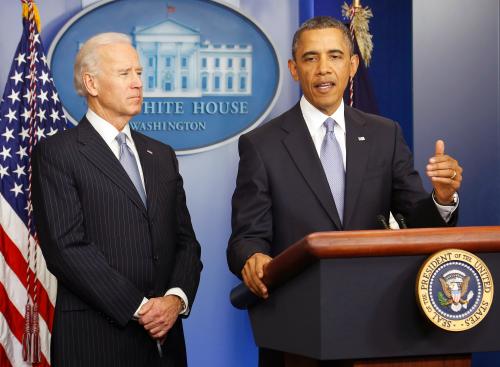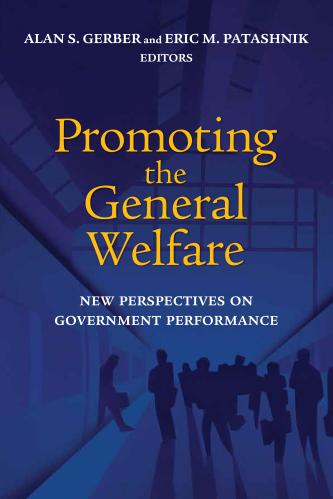The solution to the nation’s long-term deficit problem is generally portrayed as a choice among sharp budget cuts, major tax increases or a combination of the two. Given the magnitude of the problem, some level of sacrifice is probably unavoidable. But there is a third, overlooked approach to major budget savings — innovation — that the new congressional super committee should also include as a key component of its deficit-reduction strategy.
Innovation in this case is the process of trying a range of promising approaches and using rigorous evaluation methods to determine which of them really work. In many areas of the economy — such as information technology, agriculture and manufacturing — innovation has often identified ways to both reduce cost and improve performance. This has led to amazing progress over time, including exponential gains in computing power over the past half-century at a steadily decreasing price. So a logical question is: Can innovation in policy produce more effective government at lower cost?
The answer is yes. There are proven examples, from U.S. welfare policy and other areas, where innovative reforms produced major budget savings while simultaneously improving people’s lives. This suggests that part of the answer to our deficit problem lies in American ingenuity and not just sacrifice.
Welfare policy shows the potential. In the 1980s and 1990s, the federal government supported many innovative state and local welfare reform programs. Importantly, the government required these reforms to be evaluated using the scientific “gold standard” method of randomly assigning some welfare recipients to the new program approach and others to welfare-as-usual. Three of the major reform initiatives — two in California, one in Oregon — were found especially effective. Focused on moving welfare recipients quickly into the workforce through short-term job-search assistance and training (as opposed to longer-term remedial education), the initiatives produced gains in participants’ employment and earnings of 20 percent to 50 percent. Remarkably, they also produced net savings to the government, in reduced welfare and food stamps, of $1,700 to $6,000 per person.
Here was strong scientific evidence that reform of a government program both saved taxpayer money and helped people move into work. Because of their credibility, these findings helped shape the bipartisan 1996 federal Welfare Reform Act and subsequent transformation of state and local welfare programs nationwide to a work-focused approach.
But welfare is a relatively small piece of the federal budget. What about in the huge, growing, high-cost area of healthcare? Here, a recent example of smart reform is the Transitional Care Model, a nurse-led hospital discharge and home follow-up program for chronically ill older adults. The program is designed to address a major problem in the American healthcare system: More than one-third of older patients discharged from U.S. hospitals each year are re-hospitalized within 90 days, generating major costs to Medicare.
The Transitional Care Model has been shown in two rigorous randomized studies to reduce re-hospitalizations by 30 percent to 50 percent and net healthcare costs by $4,000 per patient, without any adverse effects on patient health or quality of life. These results suggest that effective nationwide implementation of this reform model would generate savings to Medicare of about $10 billion per year — without cutting anyone’s benefits.
A second healthcare example is a federal study in the 1990s that rigorously evaluated a prospective payment system for Medicare home health agencies — i.e., paying such agencies an up-front lump sum per patient — against the usual cost-reimbursement approach. This study found that prospective payment reduced Medicare costs by 20 percent over three years compared to cost reimbursement, with no adverse effects on patient health. These findings helped shape Medicare’s national implementation of prospective payment for home health agencies in 2000, producing large cost savings in the $15 billion program.
To identify enough of these cost-saving innovations to yield meaningful deficit reduction, many more rigorous evaluations of diverse policy innovations are needed. Innovation, by its nature, involves trial and error. In innovative sectors of the economy, such as information technology, many laboratory findings that initially appear promising are found not to work, requiring continuous experimentation to find those that will. The same pattern applies in welfare, healthcare and other policy areas — only a subset of the promising strategies that are rigorously evaluated are ultimately found effective, underscoring the importance of testing many.
The Joint Select Committee on Deficit Reduction could make this happen. As one of its central recommendations, it could propose a new “innovate and evaluate” initiative over the next decade, spanning the broad range of federal program areas — defense procurement, healthcare, retirement savings, education, housing, foreign aid and others. The goal would be to build a sizable body of proven, cost-saving strategies that aggregate to major long-term spending reductions, without loss of quality or benefit to the American people.
The deficit talk in Washington is stuck on the austerity and tax channel. An important, third option has been overlooked — one that could produce more effective and less expensive government. Innovate.
The Brookings Institution is committed to quality, independence, and impact.
We are supported by a diverse array of funders. In line with our values and policies, each Brookings publication represents the sole views of its author(s).









Commentary
Op-edReduce the Budget Deficit Through Innovation
November 1, 2011